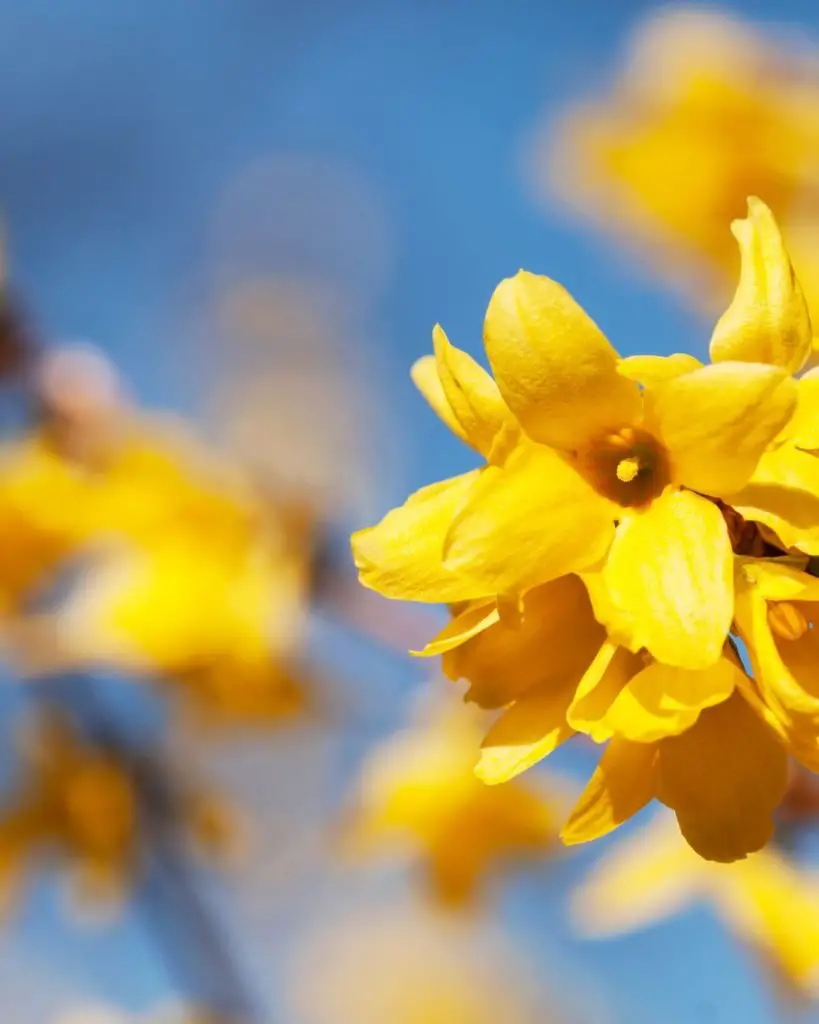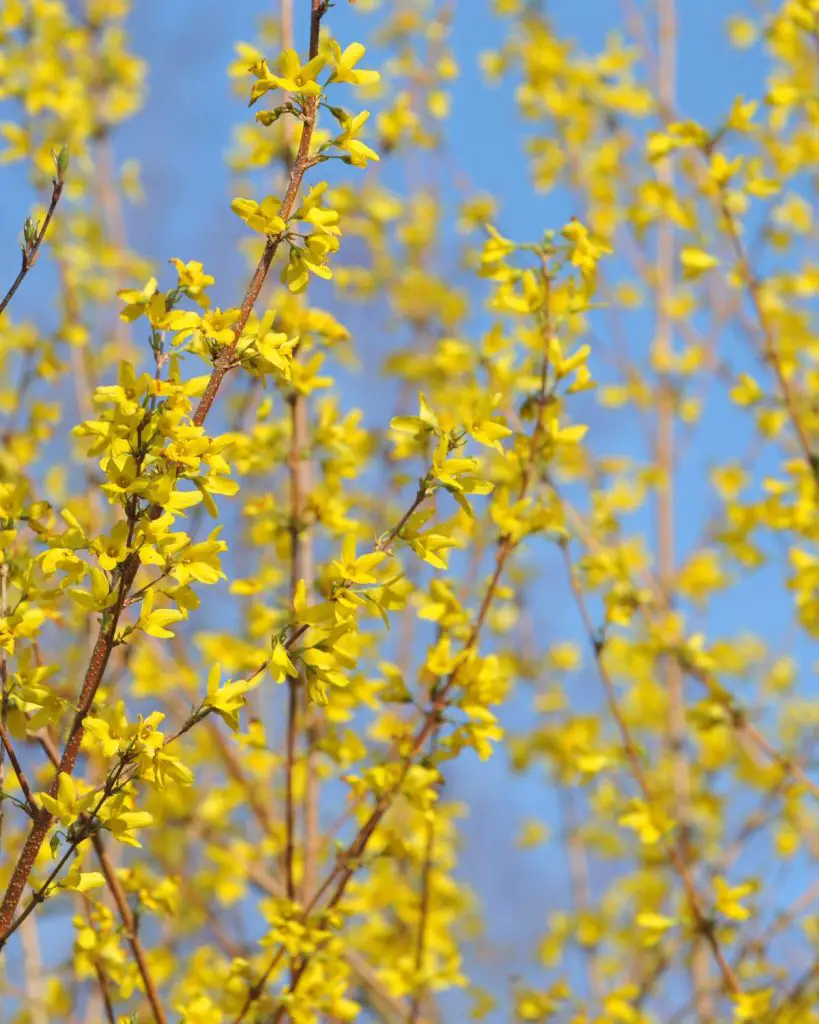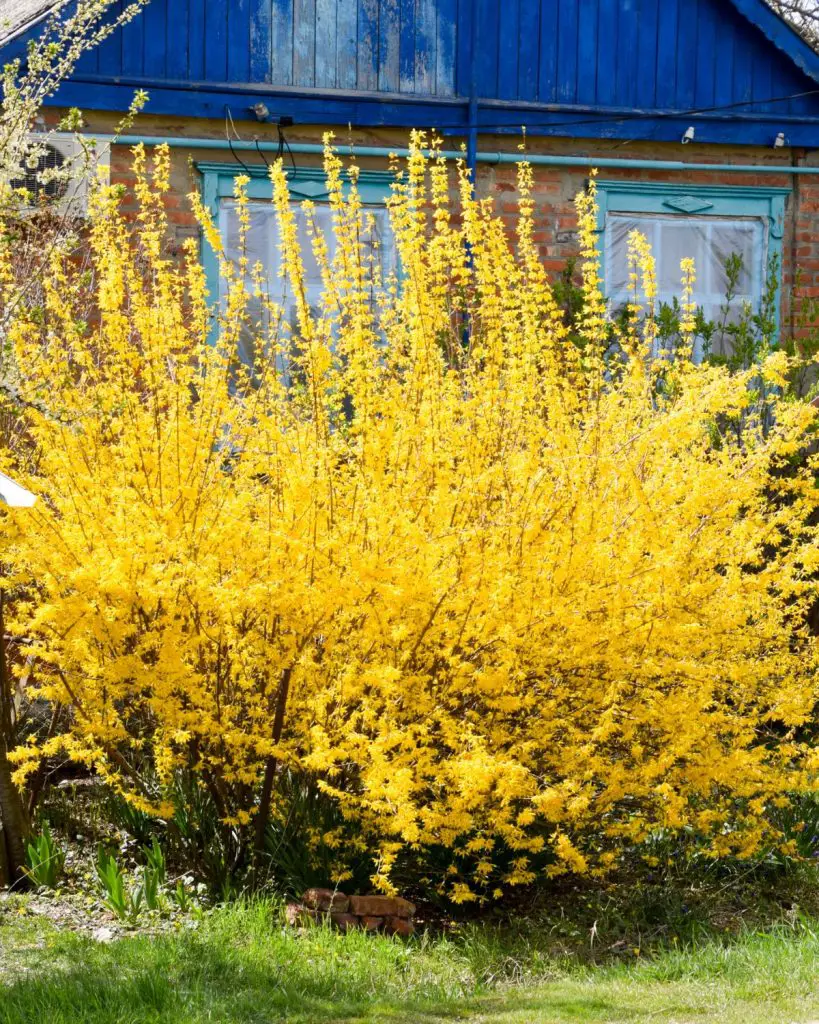How to Grow and Propagate Forsythia Bushes: Tips and Tricks for Home Gardeners
Forsythia bushes are some of the most beloved and recognizable shrubs in the spring. With their bright yellow flowers and cheerful demeanor, they can bring a sense of happiness and warmth to any garden or landscape. But what makes these bushes so special, and how can you grow and propagate them successfully? In this blog post, we’ll explore some easy tips and tricks for home gardeners looking to cultivate forsythia bushes.
Forsythia bushes are a versatile addition to any landscaping project. Not only do they provide a natural and living privacy wall during the warmer months, but they also serve as a formidable solution to erosion control on steep inclines and as an attractive foundation planting option. For those feeling adventurous, the weeping type of Forsythia can be trained to grow like a vine and draped over a trellis or cascading down a retaining wall. So if you’re looking to add some natural charm to your outdoor space, Forsythia could be just the thing you need!
Forsythias are resilient plants that can handle less-than-ideal soil and can thrive in areas with limited rainfall once they have taken root. These bright yellow shrubs will flourish as long as they are placed in sun-drenched spots. One of the only challenges is maintaining their shape and size through regular pruning. However, if you appreciate a more untamed appearance, simply let them grow wild! A natural look is fitting for borders filled with these bushy blooms that dance alongside the woods.

Planting
These bushes can grow in both height and width, so planting them in a row can create a stunning natural wall. To give them room to expand, plant each forsythia bush 4 to 6 feet apart from one another. Fall is the perfect time to plant, while these bushes are dormant, and it’s important to make sure they’re placed in full sun for optimal growth. When planting, dig holes twice the size of the root ball and make sure that the top of the root ball is level with the ground. Pack the soil firmly around the roots and be sure to water frequently. Let your new forsythia hedge flourish!
Light
To see your forsythia bushes bloom with brilliance, they need a minimum of six hours of direct sunlight on most days. Without ample sunshine, the number of flowers may dwindle. So, if you want to ensure a colorful display, give your plants the sunshine they crave.
Soil
Forsythias, the hardy plants that they are, aren’t too fussy when it comes to their environment. While they do prefer soil that’s loose and well-draining, they can also handle a tougher clay soil. And it doesn’t matter if their soil tends towards acidic or alkaline; these troopers can make it work. Just remember that drainage is key, so be sure to give compacted soils a little extra love.

Water
Forsythia bushes thrive in moderately moist soil, but can handle a drought once they’ve rooted themselves. Don’t forget to give them enough water (about 2 inches a week) when they’re young and until they’re established. Once they’re rooted, sit back and relax, only giving them a splash of water during extended periods of dry weather.
Temperature and Humidity
Forsythias are quite particular about the weather conditions they prefer. Too dry and they’ll refuse to flower, too moist and they’ll wilt. Their ideal temperature range is between 55 and 70 degrees Fahrenheit, but they’re a tough plant that can survive colder winters (but watch out for falling below minus 5 degrees Fahrenheit!). Even if exposed to extreme cold, these reliable flowers will typically return to full bloom within a year. For gardeners in the north, it’s important to choose a hardy variety that can withstand the local climate.
Fertilizer
To give your forsythia bush the best chance at blooming success, it’s important to hold off on fertilizing until it’s mature enough and thriving. Once it hits the one-year mark and seems to be in solid health, you can start sprinkling around some granular fertilizer every few weeks during the warmer months to keep it in tip-top shape.

Pruning Forsythia
Let your forsythia bush go wild if you fancy a more natural look! Without annual pruning, your bush will grow in all sorts of curvy shapes – and that’s okay! No need to get out the pruning shears every year, as you can let your bush take on its own unique and playful form. So embrace the wild side of your forsythia, and let its branches shoot out in every direction!
Transform your unruly forsythia bush into a picture-perfect masterpiece with a little bit of pruning magic. With careful attention to timing, you can snip away any errant branches to create a more polished and organized appearance. To ensure a stunning display of springtime blooms, be sure to prune after the last blooms have faded in the spring. But beware, procrastinating until after July could cost you a year of lackluster shrubs. So grab your shears and get ready to shape your bush into a work of art.
Transform your forsythia into a flourishing masterpiece! Give your shrub the ultimate spa day by pruning a quarter to a third of its oldest branches, allowing room for new and vibrant growth. Taking it to the next level, you can sculpt and refine its shape by selectively cutting newer branches to create an eye-catching pattern. Watch as your rejuvenated forsythia becomes a stunning addition to your garden.
Propagating Forsythia
Our favorite way to propagate forsythia is tip layering.
This method is so easy, weeping forsythia varieties do it all by themselves. And, it’s really fun for gardening with children, because all it takes is bending a stem to the ground and keeping it there.
Ready to grow your own shrub? First, get a large pot and fill it with potting soil. Then, choose a long stem from the shrub that can reach the pot with some extra length to spare. Give the stem a little wound about 10 inches from the tip, bury it under 2 inches of soil (leaving the tip exposed), and keep the soil moist to encourage root growth. Use a stone or bend a nail to hold the stem in place if needed. Once the new plant has rooted, you can cut the stem that connects it to the parent plant. It’s like magic!

To conclude, growing and propagating forsythia bushes at home is a wonderful and rewarding experience. Seeing the first sprouts of foliage emerge from the spacious backyard in the spring can be a beautiful sight, especially when viewed against a backdrop of warm sunlight and clear skies. With some patience and dedication, you can quickly master the delicate process of raising these lovely shrubs. Not only are they very easy to maintain, but you can also propagate them by cutting back branches that have become overgrown or removing healthy stems to encourage an abundance of new growth throughout the year. The best part about it all? Forsythia bushes make for awesome landscaping elements that require minimal effort to install; just don’t forget to water regularly! For anyone looking to spruce up their outdoor space this summer with some effortless yet elegant perennials, forsythia bushes are definitely worth a try!
You may also enjoy these related articles:
- Planting Ranunculus | Where, When, How
- How to Start a Cut Flower Garden
- Growing in Landscape Mesh for a No Weed Garden
- Planting Daffodils
- Starting Seeds Indoors
Did you enjoy this article? Want to hear more? Stay in touch! Sign up below to receive weekly tips and inspiration for your homestead.
